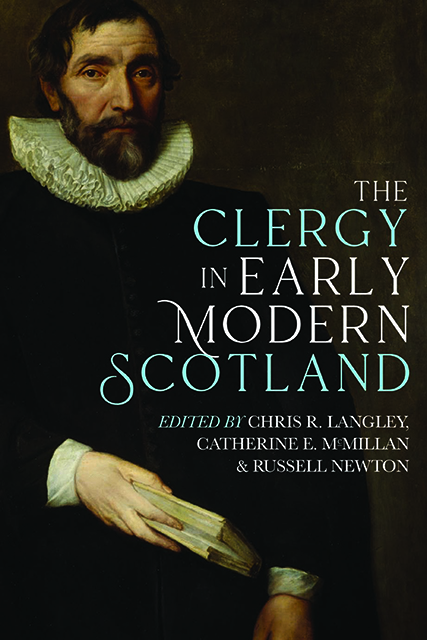Afterword
Published online by Cambridge University Press: 14 January 2023
Summary
Between 1500 and 1700 the Scottish clergy underwent a transformation: following the Protestant Reformation crisis of 1559–60 the clerical estate of the late medieval Church was supplanted and replaced by clergy from the new Reformed Kirk and these men gradually established a Protestant parochial ministry across Scotland. This volume has offered a fascinating insight into different aspects of these new clerics and their ministry during the first 150 years of the Reformed Kirk. With its sections on themes and case studies the essays range from individual experiences, group characteristics, and regional variations to the conceptual world of the Scottish Reformed clergy.
The pre-Reformation Scottish Church was part of a multinational organisation with its headquarters in Rome. By the start of the sixteenth century, the Scottish Church had acquired a distinct identity and its clergy reached across the entire kingdom, from Tiree in the Hebrides in the west to the Fife Ness promontory on the east coast, and from the Shetland Islands in the north to the shores of the Solway Firth in the south; a comprehensive authority that Scottish kings had not yet achieved. The clerical estate encompassed a large quantity and variety of personnel, with the secular clergy within the territorially based organisation and the monastic or ‘regular’ clergy in their different orders. In addition to these primary spiritual roles, the Church ran its own legal system and furnished aid for the poor and sick as well as staffing Scotland’s three medieval universities and many schools. All these clergy worked within complex hierarchies and frequently competed against each other. Whilst the ‘spiritual’ was distinct from the ‘temporal’ in theory, the clerical estate in Scotland did not operate as a single, monolithic bloc.
For most ordinary Scots the medieval clergy was a far more potent and present force in their lives than the king. Over the centuries the Catholic Church had been given many grants of land and wealth that collectively far outstripped the resources available to the Scottish Crown and brought substantial temporal power to the higher clergy. The laity were adept at recognising the variety of clerics that they might encounter and used colour coding to distinguish between orders of monks and friars, such as Blackfriars for Dominicans and Greyfriars for Franciscans.
- Type
- Chapter
- Information
- The Clergy in Early Modern Scotland , pp. 225 - 236Publisher: Boydell & BrewerPrint publication year: 2021



